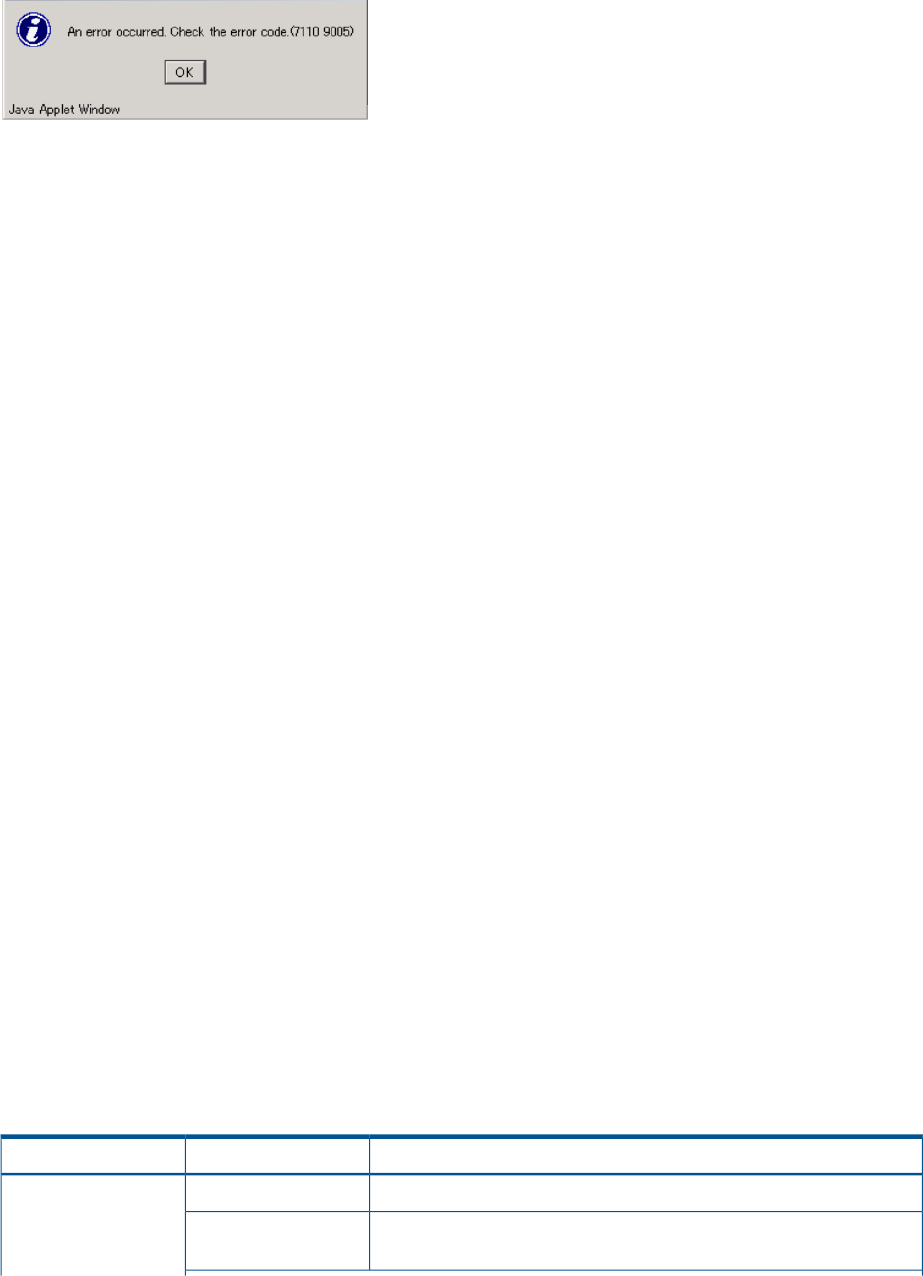HP XP24000/XP20000 Business Copy Software User Guide (T5213-96034, November 2011)
Table Of Contents
- XP24000/XP20000 Business Copy Software User Guide
- Contents
- 1 Overview of HP XP Business Copy Software
- 2 About XP Business Copy Operations
- 3 Interoperability with Other Products and Functions
- 4 Preparing for XP Business Copy Operations
- 5 Using the XP Business Copy GUI
- 6 Performing XP Business Copy Operations
- Configuring the Volume List
- Changing or Deleting the Settings in Preview List
- Setting or Resetting the Reserve Attribute
- Setting Options
- Creating Pairs
- Splitting Pairs
- Suspending Pairs
- Resynchronizing Pairs
- Deleting Pairs
- Viewing Detailed Volume and Pair Information
- Viewing S-VOL Path Information
- Viewing the Number of Pairs and License Information
- Viewing Pair Operation History
- 7 Troubleshooting
- 8 Support and Other Resources
- Glossary
- Index

To display the Error dialog box, select the failed volume in the Preview List on the Pair Operation
window, right-click to display the menu, and then click Error Detail. See the HP XP24000/XP20000
Remote Web Console Error Codes for the list of error codes and corrective actions.
Figure 40 Error Dialog Box
Troubleshooting When Using RAID Manager
When an error has occurred in an XP Business Copy pair operation using RAID Manager, you
can try to identify the error by referring to the log displayed in the RAID Manager window or the
RAID Manager operation log file. The RAID Manager operation log file is stored in the following
directory.
/HORCM/log*/curlog/horcmlog_HOST/horcm.log, where
• * is the instance number.
• HOST is the host name.
To identify the cause of the error code using the log file, follow the procedure below. For more
information about RAID Manager, see the HP XP RAID Manager User Guide.
1. Open the RAID Manager log file and find the error code.
Example: 11:06:03-37897-10413- SSB = 0xb9a0,2089
Error codes appear on the right of the equal symbol (=). The alphanumeric characters of last
four digits on the left of the comma (,) indicates SSB1 (for example, b9a0), and the right of
the comma (,) indicates SSB2 (for example, 2089).
2. See Table 40 (page 95) to locate the meaning of the error code.
For details about the cause of the error that is not described in Table 40 (page 95), contact
HP technical support.
To identify the cause of the error using the log displayed on the RAID Manager window, follow
the procedure below. For more information about RAID Manager, see the HP XP RAID Manager
User Guide.
1. Find the error code from the logs displayed on the RAID Manager window.
Example: It was rejected due to SKEY=0x05, ASC=0x20,SSB=0xB9E1,0xB901 on
Serial#(64015)
Error codes appear on the right of SSB=. The alphanumeric characters of last four digits on
the left of the comma (,) indicates SSB1 (for example, B9E1), and the alphanumeric characters
of last four digits on the right of the comma (,) indicates SSB2 (for example, B901).
2. See Table 40 (page 95) and find the meaning of the error code.
For details about the cause of the error that is not described in Table 40 (page 95), contact
HP technical support.
Table 40 Error Code and Error Contents When Operating RAID Manager
Error ContentsError Code (SSB2)Error Code (SSB1)
Error occurred in the XP Business Copy Pair operation.-b9a0/b9a1/b9a2/
b9a5/b9a6/b9ae/
Because the specified XP Thin Provisioning V-VOL was not associated
with a pool, the pair operation was rejected.
200d
b9af
Troubleshooting When Using RAID Manager 95










